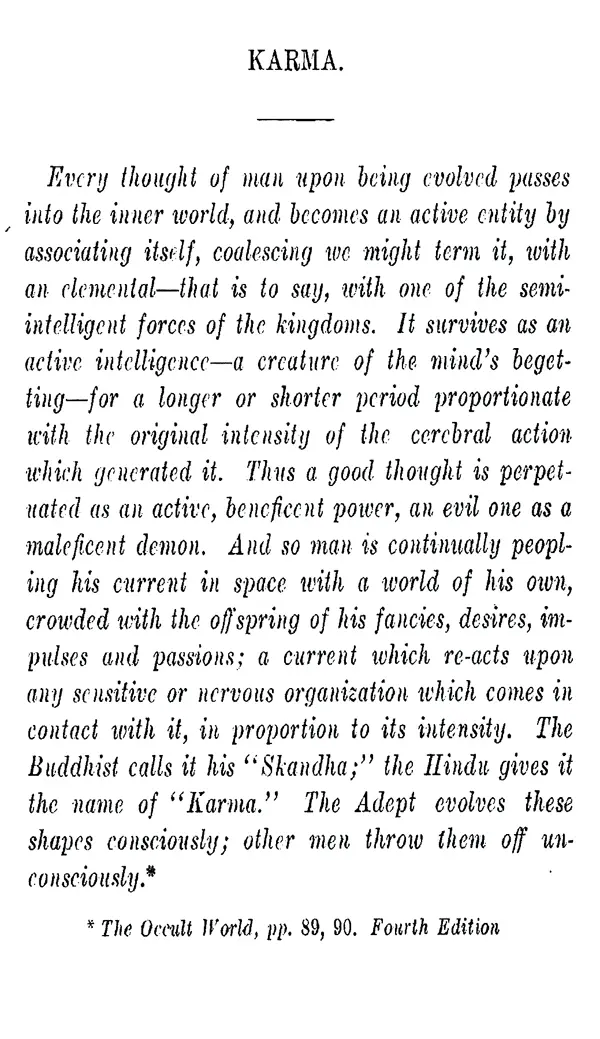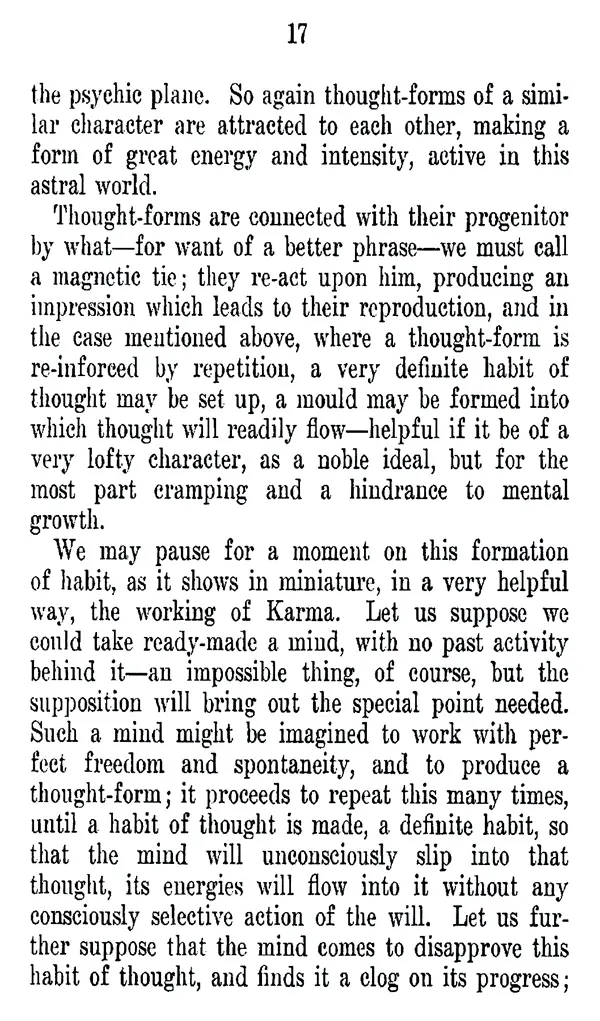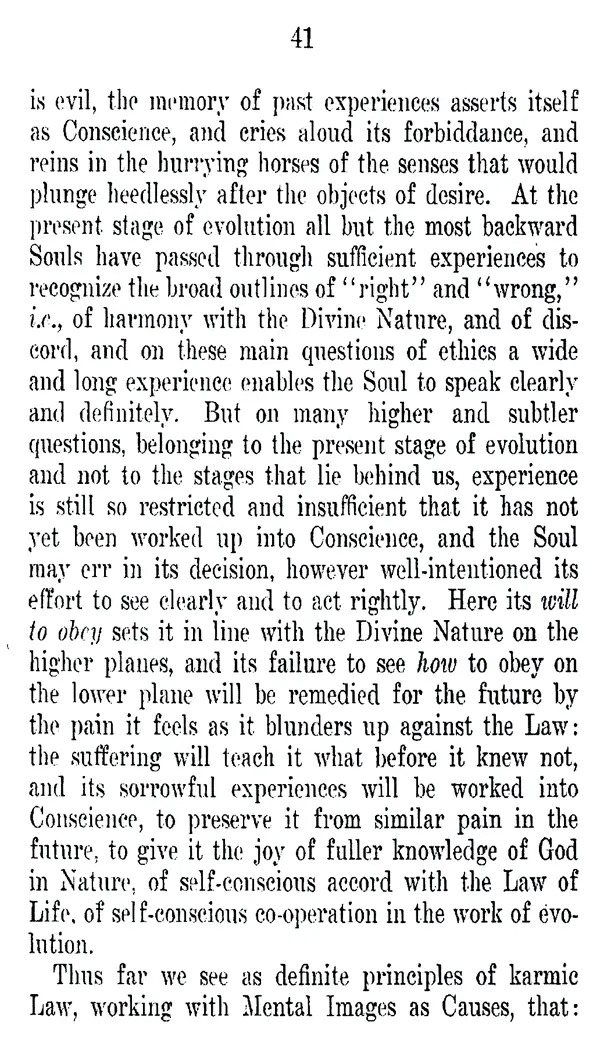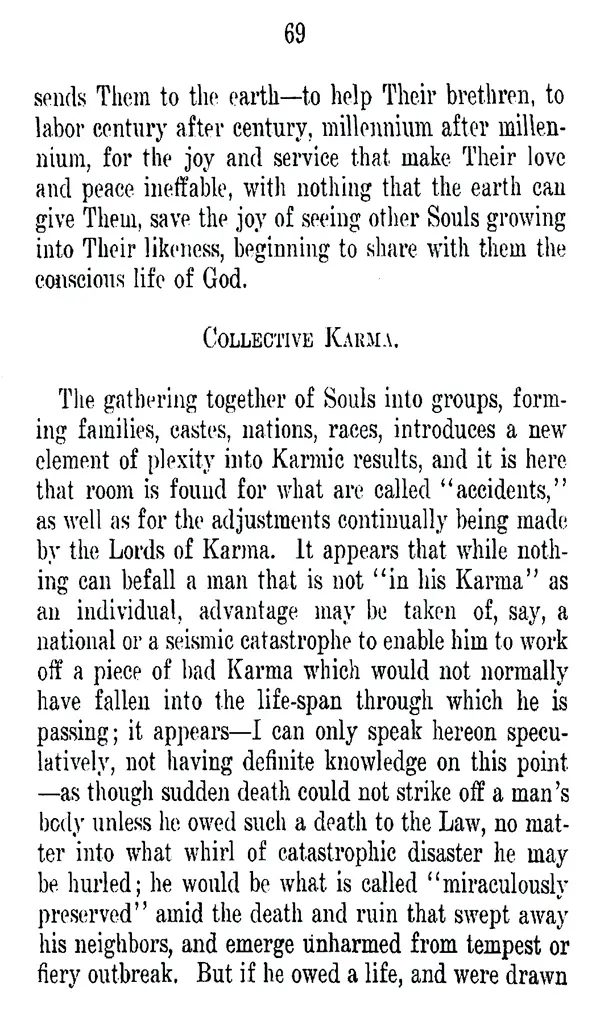ABOUT THE BOOK Every thought of man upon being evolved passes into the inner world, and becomes an active entity by associating itself, coalescing we might term it, with an elemental that is to say, with one of the semi-intelligent forces of the kingdoms. It survives as an active intelligence-a creature of the mind's begetting-for a longer or shorter period proportionate with the original intensity of the cerebral action which generated it. Thus, a good thought is perpetuated as an active, beneficent power, an evil one as a maleficent demon. And so man is continually peopling his current in space with a world of his own, crowded with the offspring of his fancies, desires, impulses and passions; a current which reacts upon any sensitive or nervous organization which comes in contact with it, in proportion to its dynamic intensity. The Buddhist calls it his "Skandha;" the Hindu gives it the name of "Karma." The Adept evolves these shapes consciously; other men throw them off unconsciously.
ABOUT THE AUTHOR Annie Besant nee Wood was born on 1st October 1847 and was died on 20th September 1933. In 1867 Annie at the age of 20 got married Frank Besant, a clergyman and they had two children. Annies increasingly anti-religious views led to their legal scepter just saw the source from which a universe proceeds is a manifested divine being to action in 1873. She then became a prominent speaker for the National Secular Society as well as a writer and a close friend of Charles Brad laugh and in 1877 they were prosecuted for publishing a book by birth controller Campaigner. The scandal made them famous, and Brad laugh was subsequently elected M.P. For Northampton in 1880. Thereafter she became involved with union action, including the bloody Sunday demonstration and the London match girls strike of 1898. She was a leading speaker for both the Fabian Society and the Marxist Social Democratic Federation. She was also elected to the London School Board for tower hamlets, topping the poll even though few women were qualified to vote at that time. She started the Central Hindu School in Benares as a chief means of achieving her objects.
PREFACE Few words are needed in sending this little book out into the world. It is the fourth of a series of Manuals designed to meet the public demand for a simple exposition of Theosophical teachings. Some have complained that our literature is at once too ab struts, too technical, and too expensive for the ordinary reader, and it is our hope that the present series may succeed in supplying what is a very real want. Theosophy is not only for the learned; it is for all. Perhaps among those who in these little books catch their first glimpse of its teachings, there may be a few who will be led by them to penetrate more deeply into its philosophy, its science and its religion, facing its abstruse problems with the student's zeal and the neophyte's ardor. But these manuals are not writ ten for the eager student, whom no initial difficulties can daunt; they are written for the busy men and women of the work-a-day world, and seek to make plain some of the great truths that render life easier to bear and death easier to face. Written by servants of the Masters who are the Elder Brothers of our race, they can have no other object than to serve our fellow-men.
**Contents and Sample Pages**
















